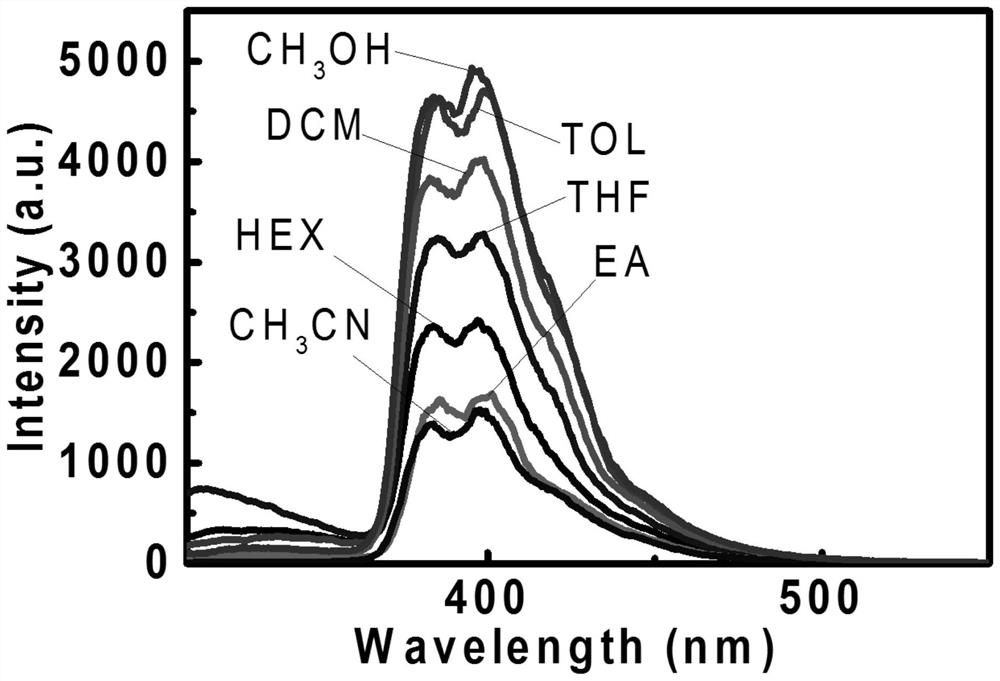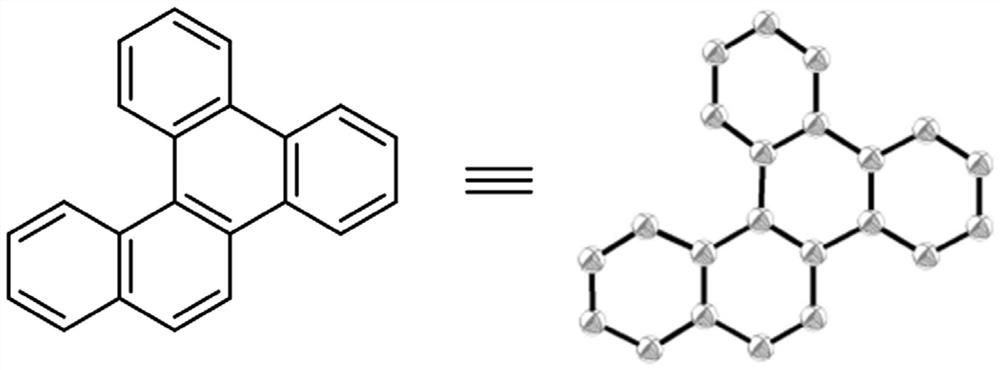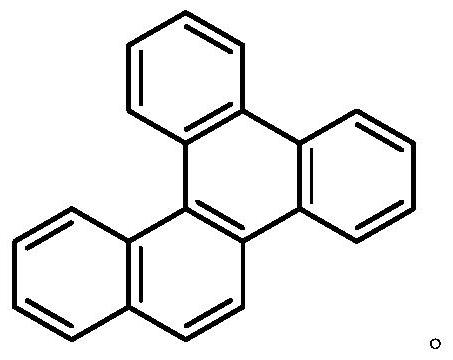Synthesis method of compound with nano graphene structure
A nano-graphene and synthesis method technology, applied in the field of fluorescent materials, can solve problems such as harsh conditions and complicated methods, and achieve the effects of simple raw materials, good spectral properties, and good stability
- Summary
- Abstract
- Description
- Claims
- Application Information
AI Technical Summary
Problems solved by technology
Method used
Image
Examples
Embodiment 1
[0046] The present embodiment provides a kind of synthetic method of nanographene structure compound, and this method comprises the following steps:
[0047] Step 1, in the glove box, add Pd(OAc) sequentially into the sealed tube 2 (13.5mg, 0.06mmol), P(p-F-C 6 h 4 ) 3 (22.8mg, 0.072mmol), CsOPiv (42.1mg, 0.18mmol), Cs 2 CO 3 (560mg, 1.8mmol) and 60mL DMF were first stirred in the glove box for 5-10min, then compound 1 (201.6mg, 0.72mmol) and compound 2 (133.8mg, 0.6mmol) were added into a sealed tube.
[0048] After the addition was complete, the sealed tube was taken out of the glove box and reacted at 130° C. for 20 h. After the reaction was completed, the reaction liquid was returned to room temperature, extracted with DCM and saturated ammonium chloride solution, back extracted three times and the organic phase was collected. The organic phase was washed with anhydrous MgSO 4 Dry, filter with Celite, and spin dry. Separation by column chromatography (PE / EA=10:1, R...
Embodiment 2
[0058] The present embodiment provides a kind of synthetic method of nanographene structure compound, and this method comprises the following steps:
[0059] Step 1, in the glove box, add Pd(OAc) sequentially into the sealed tube 2 (135mg, 0.6mmol), P(p-F-C 6 h 4 ) 3 (228mg, 0.72mmol), CsOPiv (421mg, 1.8mmol), Cs 2 CO 3 (5.6g, 18mmol) and 60mL DMF were first stirred in the glove box for 5-10min, then compound 1 (2.0g, 7.2mmol) and compound 2 (1.3g, 6mmol) were added into a sealed tube. After the addition was complete, the sealed tube was taken out of the glove box and reacted at 130° C. for 20 h. After the reaction was completed, the reaction liquid was returned to room temperature, extracted with DCM and saturated ammonium chloride solution, back extracted three times and the organic phase was collected. The organic phase was washed with anhydrous MgSO 4 Dry, filter with Celite, and spin dry. Separation by column chromatography (PE / EA=10:1, R f =0.30), a yellow solid...
Embodiment 3
[0065] This example presents the application of the nano-graphene structure compound as a fluorescent material, and the nano-graphene structure compound obtained in Example 1 is used as the nano-graphene structure compound in this example.
[0066] The nanographene molecule that embodiment 1 obtains has carried out the mensuration of fluorescence emission spectrum, finds that it has better spectroscopic property, as figure 1 shown. It can be seen from its fluorescence emission spectrum that its peaks are all in the blue light region. As the polarity of the solvent changes, the position of the emission peak remains unchanged, but the emission intensity changes. where in CH 3 The emission intensity is the largest in OH, and in CH 3 The emission intensity is the smallest in CN. It has broad application prospects in the fields of organic semiconductor materials, luminescent materials, solar cells, and photodiodes.
PUM
 Login to View More
Login to View More Abstract
Description
Claims
Application Information
 Login to View More
Login to View More - R&D
- Intellectual Property
- Life Sciences
- Materials
- Tech Scout
- Unparalleled Data Quality
- Higher Quality Content
- 60% Fewer Hallucinations
Browse by: Latest US Patents, China's latest patents, Technical Efficacy Thesaurus, Application Domain, Technology Topic, Popular Technical Reports.
© 2025 PatSnap. All rights reserved.Legal|Privacy policy|Modern Slavery Act Transparency Statement|Sitemap|About US| Contact US: help@patsnap.com



